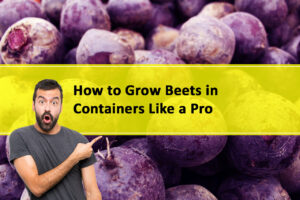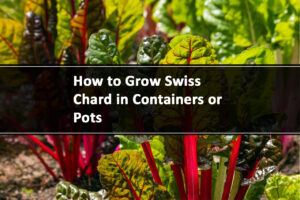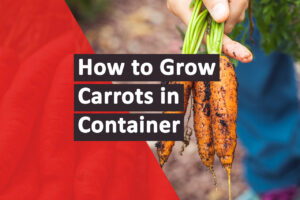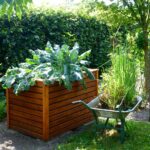Beautiful Plants For Your Interior
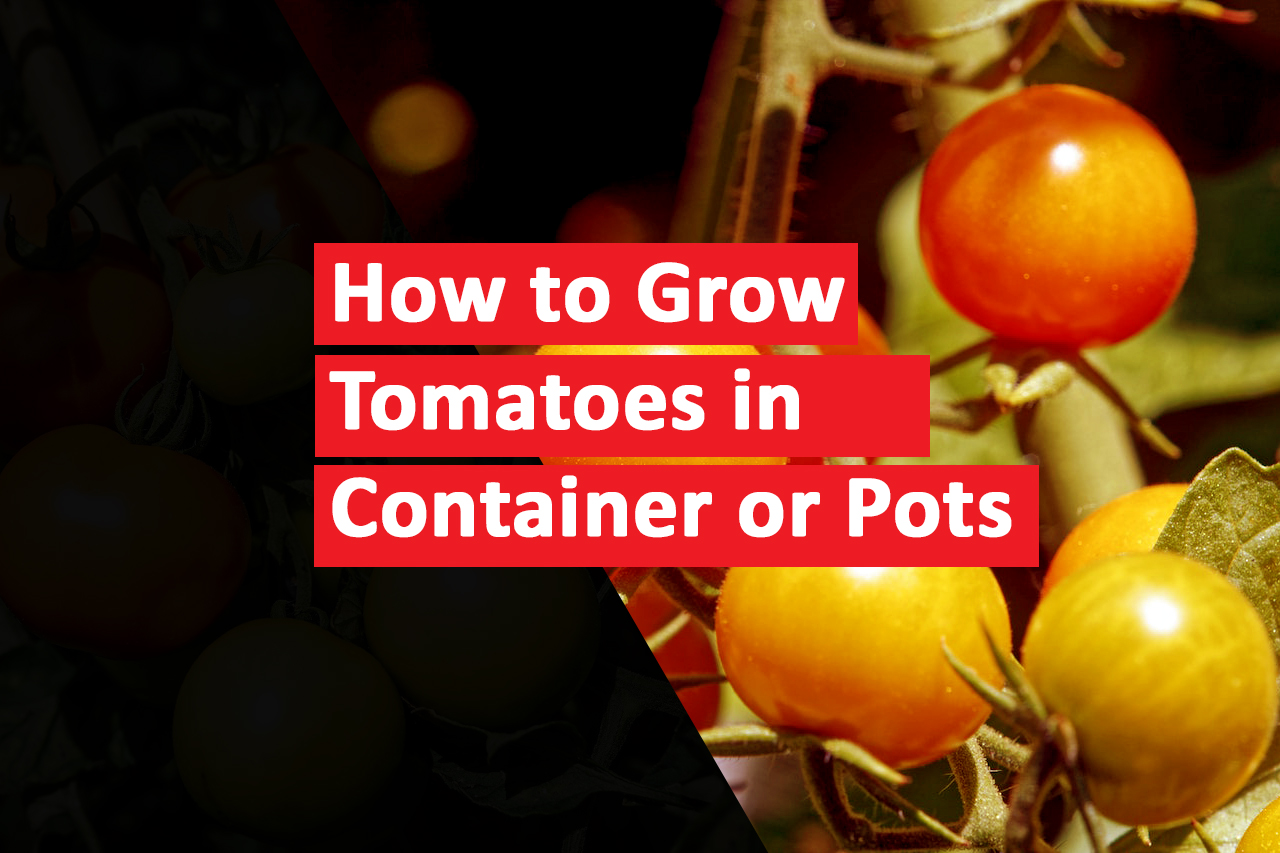
Unlock the Secret to Perfect Container-Grown Tomatoes: Learn How to Achieve Bumper Harvests!
Growing your own tomatoes in containers can be a rewarding experience, even if you have limited space. For those who desire to Grow Tomatoes in Containers and enjoy the flavor of fresh tomatoes, container gardening offers a great alternative.
Benefits of Growing Tomatoes in Containers
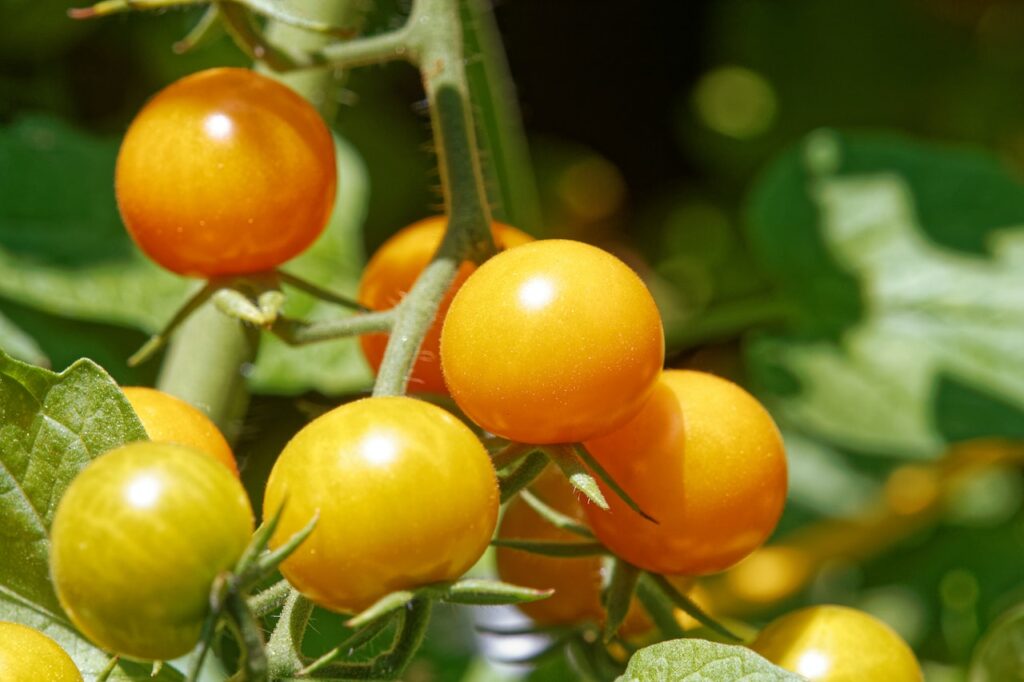
Many urban gardeners prefer growing tomatoes in containers since it has a number of advantages. The following are some major advantages of container tomato gardening:
1) Limited Space: One of the primary advantages of container gardening is that it allows you to grow tomatoes even if you have limited space. Whether you live in an apartment with a small balcony or have a tiny backyard, containers provide a versatile solution to grow tomatoes without the need for a traditional garden plot.
2) Flexibility and Portability: Containers offer the flexibility to move your tomato plants around as needed. You can position them in areas with optimal sunlight or move them indoors during inclement weather. This portability allows you to adapt to changing conditions and maximize the growth potential of your tomato plants.
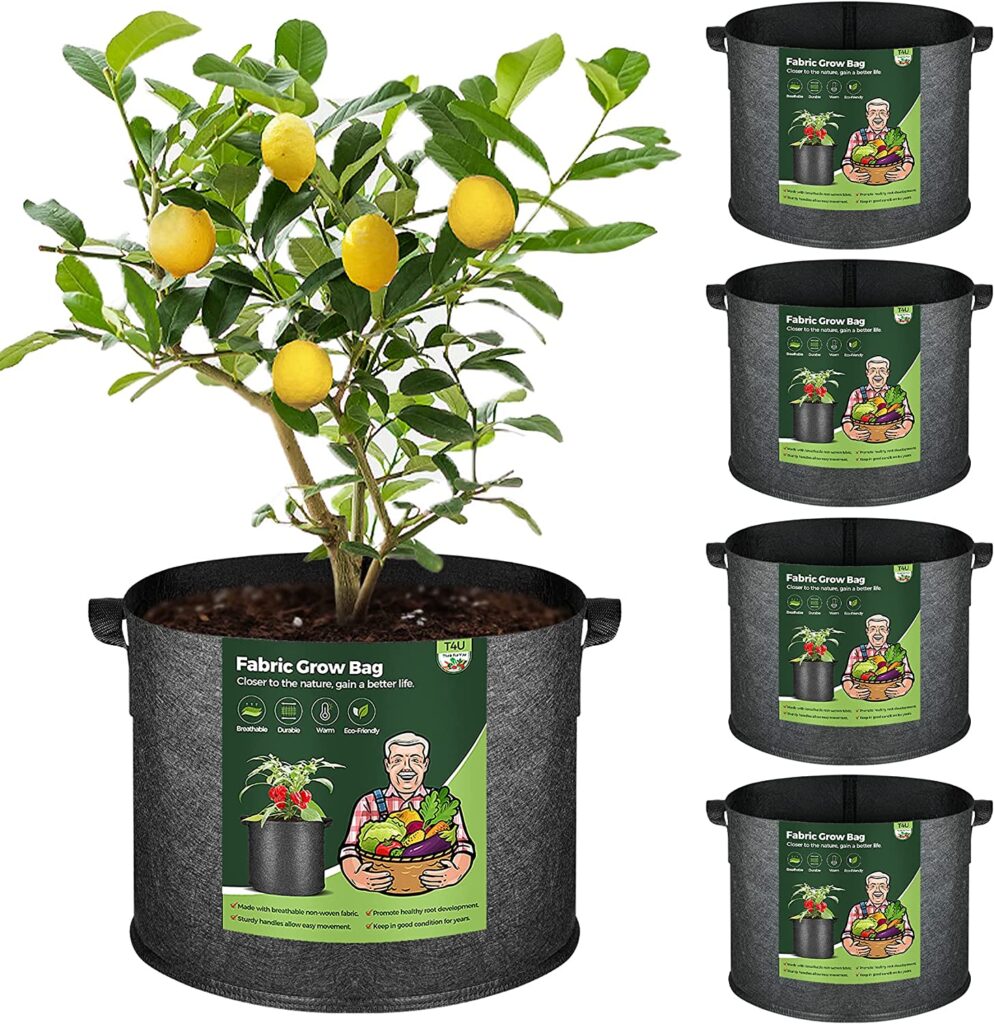
Fabric pots for tomatoes with Handles.
A 10 Gallon Pack of 5, Heavy Duty Nonwoven Smart Urban Garden Pot. Thickened Aeration Nursery Container Black for Flower and Vegetables.
3) Better Control Over Growing Conditions: When you grow tomatoes in containers, you have more control over the growing conditions. You can choose the ideal potting mix, ensure proper drainage, and adjust the watering and fertilization specifically for your tomato plants. This control allows you to create an optimal environment for healthy growth and maximum yield.
4) Reduced Risk of Soilborne Diseases: Container gardening helps reduce the risk of soilborne diseases that can affect tomatoes. By using fresh potting mix and avoiding garden soil, you minimize the chance of introducing pathogens or pests that may be present in the ground. This benefit is particularly important if you’ve had issues with soilborne diseases in your garden previously.
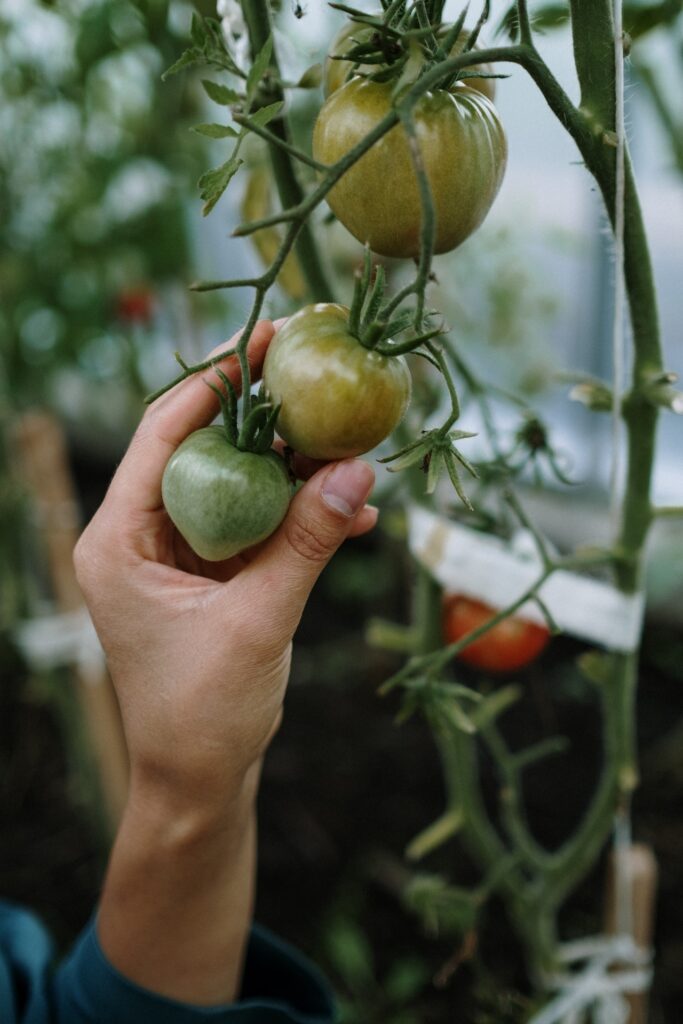
5) Ease of Maintenance: Maintaining tomato plants in containers is generally easier compared to in-ground gardening. Containers require less weeding, and the controlled environment makes it easier to monitor and manage watering, fertilization, and pest control. Additionally, pruning and harvesting can be more convenient in containers, as the plants are at a more accessible height.
6) Extended Growing Season: Containers offer the advantage of extending the growing season for tomatoes. In colder climates, you can bring your containers indoors or to a sheltered area to protect the plants from frost and extend the harvest. This means you can enjoy homegrown tomatoes for a longer period, even when the outdoor conditions are less favorable.
7) Visual Appeal and Decorative Possibilities: Growing tomatoes in containers not only provides a practical solution but also adds aesthetic value to your space. Containers come in various sizes, shapes, and materials, allowing you to create visually pleasing displays. You can choose colorful pots, hanging baskets, or even repurpose unconventional containers, making your urban tomato garden a focal point of beauty and productivity.
8) Opportunity for Experimentation: Container gardening offers a great opportunity for experimentation and variety. You can try different tomato varieties, explore new techniques, and even experiment with companion planting in containers. This allows you to expand your urban gardening knowledge and tailor your tomato-growing experience to suit your preferences.
The Best Tomato Varieties for Container Gardening
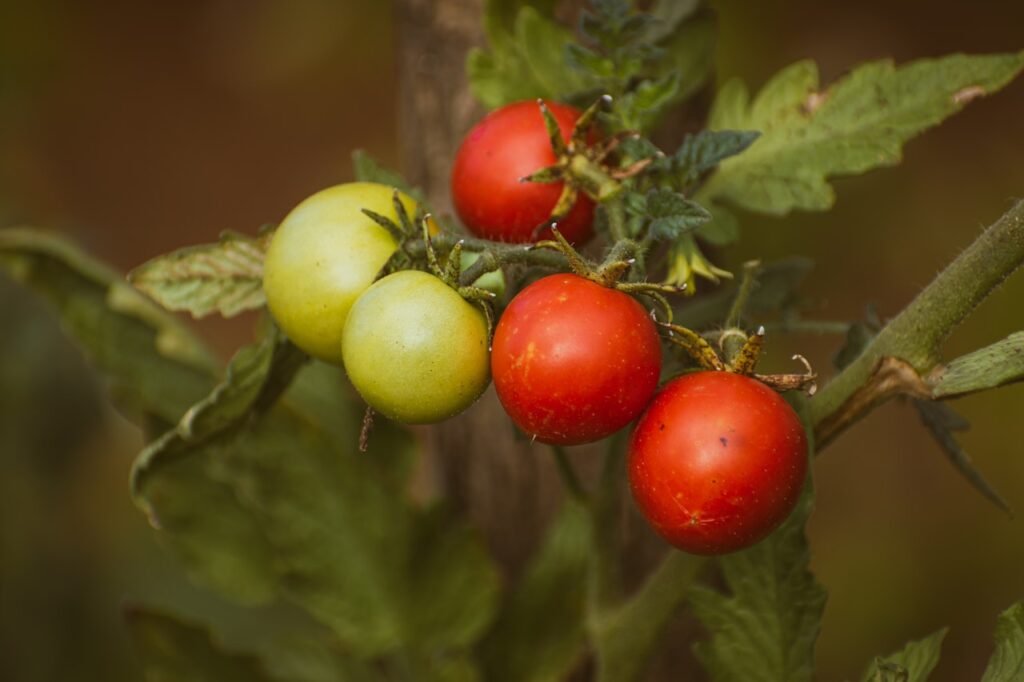
When it comes to container gardening, selecting the right tomato variety is crucial for successful growth and a bountiful harvest. Compact or dwarf varieties are particularly well-suited for container gardening as they have smaller growth habits and fit well within limited spaces. Here are some of the best tomato varieties for container gardening:
1. Cherry Tomatoes: Cherry tomatoes are a popular choice for container gardening due to their small size and abundant production. These bite-sized tomatoes come in various colors and offer a burst of sweetness. Excellent cherry tomato varieties for containers include ‘Sweet Million,’ ‘Supersweet 100,’ and ‘Tiny Tim.’
2. Determinate Tomatoes: Determinate tomatoes are compact plants that grow to a predetermined size and produce their fruit within a specific period. They are ideal for containers as they require minimal staking and pruning. Recommended determinate varieties for containers include ‘Celebrity,’ ‘Patio Princess,’ and ‘Bush Early Girl.’
3. Small-Sized Beefsteak Tomatoes: If you prefer larger tomatoes, opt for small-sized beefsteak varieties that are suitable for container gardening. These varieties produce medium to large fruit while still maintaining a more manageable size. Look for ‘Patio Princess,’ ‘Biltmore,’ or ‘Better Bush Improved’ for flavorful small beefsteak tomatoes.
4. Heirloom Varieties: Many heirloom tomato varieties can be successfully grown in containers. They offer unique flavors, colors, and shapes that add interest to your container garden. Some heirloom varieties that perform well in containers are ‘Black Krim,’ ‘Roma,’ ‘Green Zebra,’ and ‘Yellow Pear.’
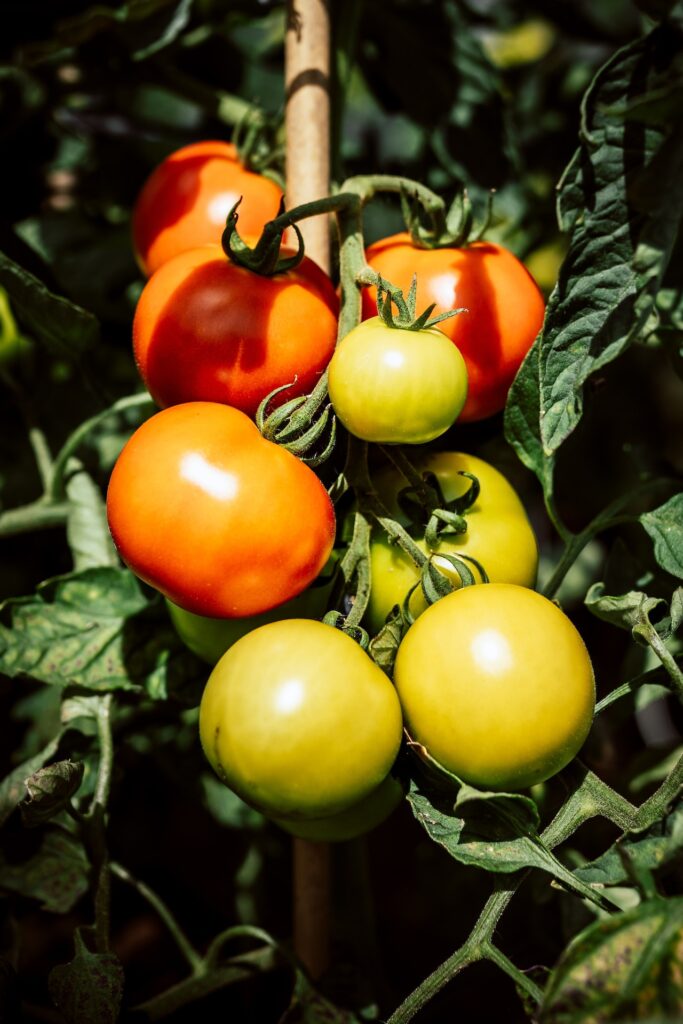
5. Patio Tomatoes: As the name suggests, patio tomatoes are specifically bred for container gardening. They are compact, productive, and often have disease-resistant traits. Popular patio tomato varieties include ‘Patio Princess,’ ‘Patio Hybrid,’ and ‘Small Fry.’
6. Tumbling Tomatoes: Tumbling tomatoes are cascading or trailing varieties that are well-suited for hanging baskets and containers. Their vines gracefully spill over the edges, creating a stunning visual display. ‘Tumbling Tom Red’ and ‘Tumbling Tom Yellow’ are excellent choices for hanging baskets and containers.
7. Dwarf Varieties: Dwarf tomato varieties are specifically bred to have a compact size, making them perfect for container gardening. These varieties have shorter internodes, which result in a bushy growth habit. Consider ‘Window Box Roma,’ ‘Tiny Tim,’ ‘Micro-Tom,’ or ‘Red Robin’ for successful container cultivation.
How to Grow Tomatoes in Containers
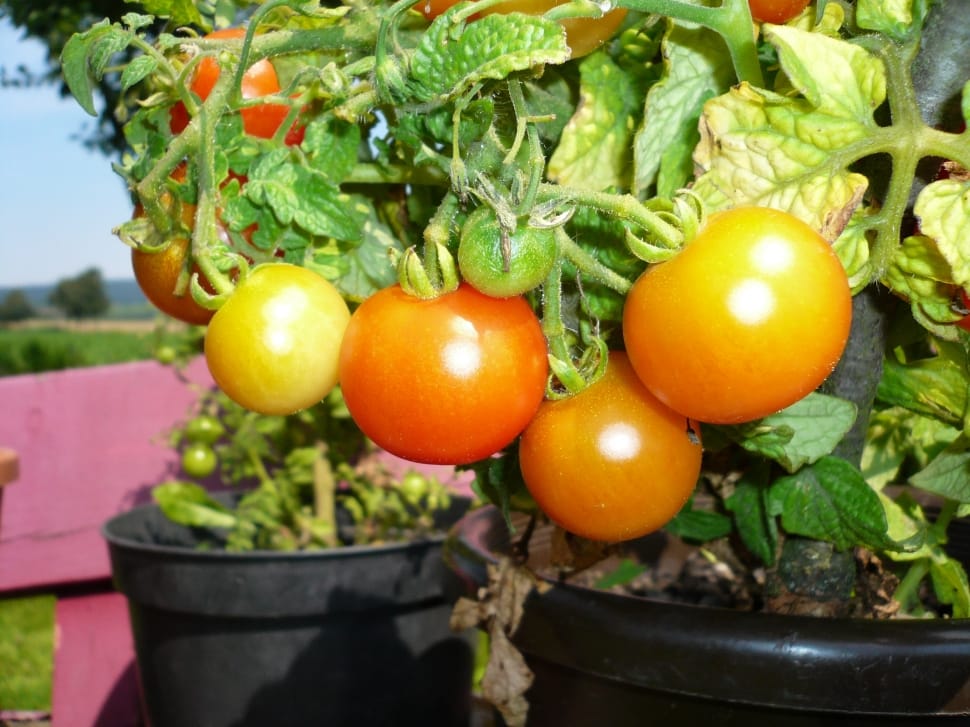
Whether you’re a seasoned urban gardener or a beginner, you’ll find valuable tips and techniques to ensure a successful harvest of delicious tomatoes. So, let’s dive in and explore how you can Grow Tomatoes in Containers!
Duration: 45 minutes
-
Choosing the Right Container
To start your tomato container garden, selecting the right container is crucial. Choose a container that is at least 15-20 inches deep and has a diameter of 18-24 inches. This site will provide ample space for the tomato plant’s root system to grow and thrive. Opt for containers made of durable materials such as terracotta or plastic, ensuring they have proper drainage holes at the bottom to prevent waterlogging.
-
Selecting the Perfect Tomato Variety
When it comes to growing tomatoes in containers, choosing the right tomato variety is essential. Look for compact or dwarf varieties that are specifically bred for container gardening. These varieties have shorter heights and more manageable growth habits, making them ideal for confined spaces. Some excellent choices for container tomatoes include Patio, Tiny Tim, Celebrity, or Cherry Tomatoes. Consider the flavor, size, and growth characteristics of each variety to suit your preferences.
-
Preparing the Container
Before planting your tomato seedlings, it’s crucial to prepare the container properly. Fill the container with a high-quality potting mix specifically formulated for vegetables. Avoid using garden soil, as it may not provide adequate drainage or essential nutrients. Add a layer of small rocks or gravel at the bottom of the container to promote better drainage. This will prevent the roots from sitting in excess water, reducing the risk of root rot.
-
Planting the Tomato Seedlings
Now it’s time to plant your tomato seedlings in the container. Gently remove the seedlings from their nursery containers, being careful not to damage the delicate roots. Dig a hole in the potting mix, ensuring it is deep enough to cover the bottom leaves of the seedling. Place the seedling in the hole and gently backfill it with soil, firming it around the base of the plant. Ensure the seedling is well-supported and upright.
-
Providing Adequate Care
Proper care is crucial for the successful growth of your container tomatoes. Here are some essential factors to consider:
a. Watering: Container-grown tomatoes require regular watering. Keep the soil consistently moist, but avoid overwatering, as it can lead to root rot. Monitor the moisture levels by checking the top inch of the soil. Water the plants deeply whenever the soil feels dry to the touch. During hot summer days, you may need to water them more frequently.
b. Sunlight: Tomatoes are sun-loving plants, so ensure your container is placed in a sunny location. They need at least 6-8 hours of direct sunlight daily to thrive. Position the container where it receives the maximum sunlight, such as a south-facing balcony or patio.
c. Fertilization: Container-grown tomatoes require regular feeding to ensure healthy growth and a bountiful harvest. Start by incorporating a slow-release vegetable fertilizer into the potting mix during planting. As the plant grows, supplement with a balanced liquid fertilizer every 2-3 weeks. Follow the instructions provided on the fertilizer packaging for the correct dosage.
d. Support: Most tomato varieties require support to grow upright and prevent the plants from sprawling. Place a stake or tomato cage in the container at the time of planting. Tie the main stem to the stake or cage using soft plant ties or twine as the plant grows taller. This will help support the weight of the plant and its fruit.
-
Pruning and Maintenance
To ensure optimal growth and productivity, proper pruning and maintenance are essential. Tomato plants tend to develop suckers, which are shoots that emerge in the leaf axils (the junction between the main stem and branches). Regularly remove these suckers to direct the plant’s energy toward fruit production. Additionally, inspect your plants regularly for pests or diseases. If any issues are detected, take appropriate action promptly to protect your crop.
How to Grow Tomatoes in Pots From Seeds
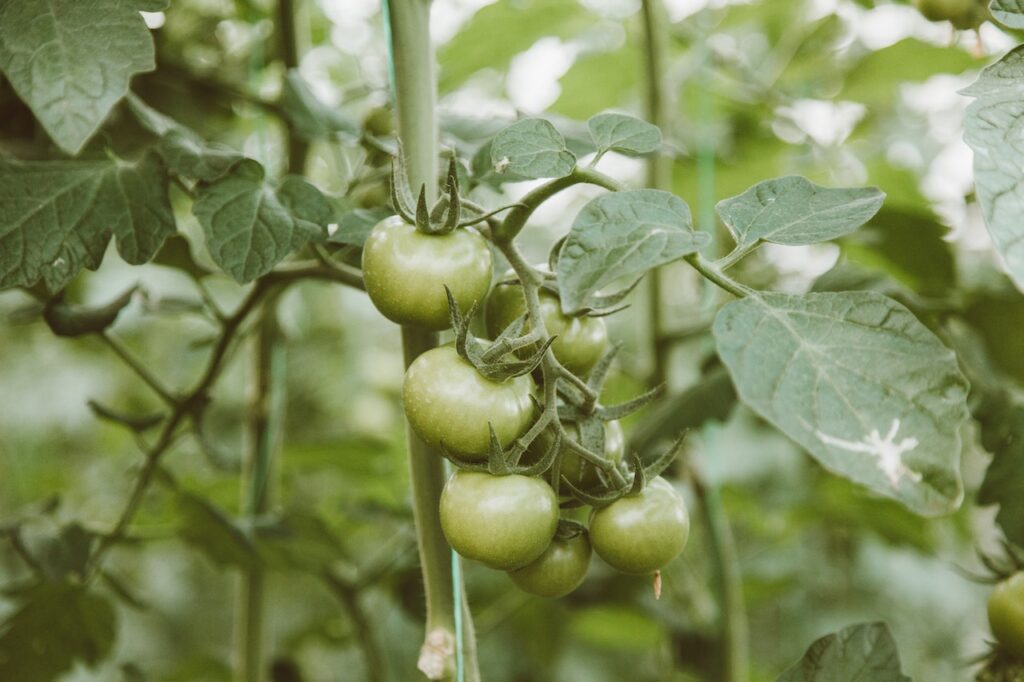
Growing tomatoes in pots from seeds is a rewarding and relatively simple process. Follow these steps to successfully grow tomatoes in pots from seeds:
1. Choose the Right Tomato Seeds: Select tomato seeds of the desired variety that are suitable for container gardening. Consider factors such as plant size, taste, and growth habit. Look for compact or dwarf varieties that thrive in confined spaces.
2. Gather Materials: Gather all the materials you’ll need, including pots or containers with drainage holes, a seed-starting mix, tomato seeds, a spray bottle, and plant labels.
3. Prepare the Containers: Fill the containers with a high-quality seed-starting mix, leaving about an inch of space below the rim. Moisten the mix slightly using a spray bottle, ensuring it’s evenly damp but not waterlogged.

Fabric pots for tomatoes with Handles.
A 10 Gallon Pack of 5, Heavy Duty Nonwoven Smart Urban Garden Pot. Thickened Aeration Nursery Container Black for Flower and Vegetables.
4. Sow the Tomato Seeds: Follow the instructions on the seed packet for the recommended sowing depth. Typically, tomato seeds are planted ¼ to ½ inch deep. Make small holes in the moistened soil using a pencil or your fingertip, and place one or two tomato seeds in each hole. Cover the seeds gently with soil and lightly press down.
5. Provide Optimal Conditions: Place the containers in a warm location that receives indirect sunlight or under grow lights. Tomatoes require temperatures of around 70-80°F (21-27°C) for successful germination. Maintain a consistent temperature and provide proper ventilation to prevent seedlings from damping off.
6. Watering and Care: Keep the soil consistently moist, but avoid overwatering, as it can lead to damping off or root rot. Use a spray bottle or a gentle watering can water the seedlings, ensuring the soil remains evenly moist. Maintain proper moisture levels throughout the germination and seedling stages.
7. Monitor Germination: Tomato seeds typically germinate within 7-14 days. During this period, keep an eye on the containers and watch for the emergence of seedlings. Once the seedlings appear, provide them with 12-14 hours of direct sunlight or sufficient artificial light each day.
8. Thin Seedlings (if necessary): If multiple seedlings sprout in the same container, thin them out once they develop their first true leaves. Keep the strongest and healthiest seedlings in each container and remove the weaker ones carefully to avoid disturbing the remaining seedling’s roots.
9. Transplanting: Once the seedlings have grown to about 6-8 inches tall and have developed a good root system, they are ready to be transplanted into larger containers or outdoor garden beds. Choose containers that are at least 15-20 inches deep and have ample drainage holes.
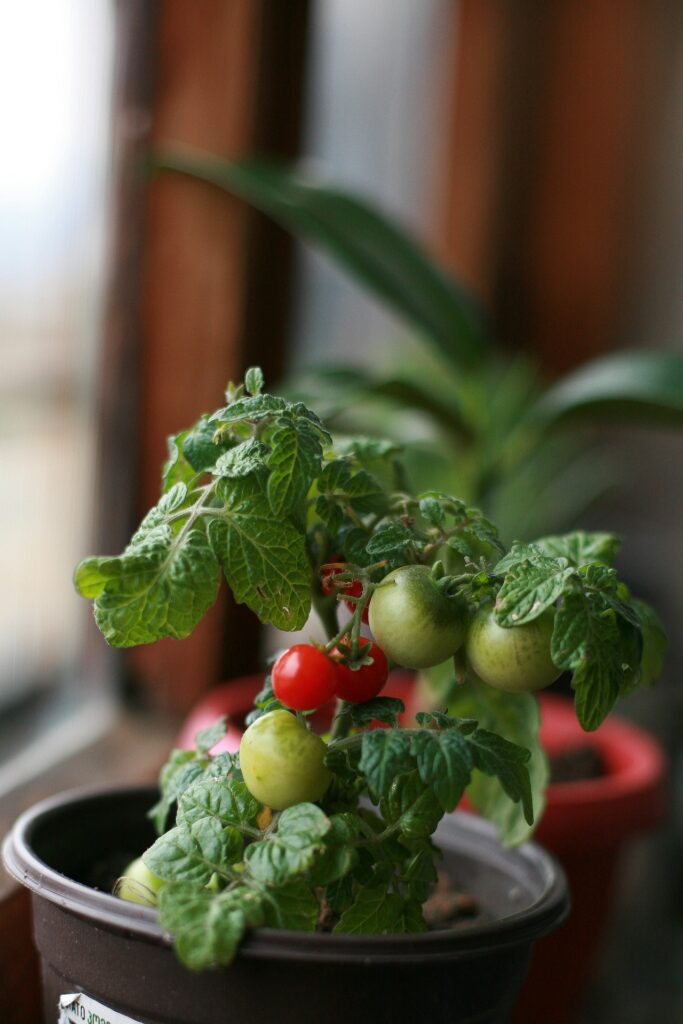
10. Harden Off and Planting Outdoors: Before transplanting the seedlings outdoors, gradually expose them to outdoor conditions over the course of 7-10 days. This process, known as hardening off, helps the plants acclimate to the outdoor environment. Choose a sunny spot with well-draining soil and transplant the seedlings, ensuring they are planted at the same depth as they were in the seed-starting containers.
11. Provide Support and Care: As the tomato plants grow, provide support such as stakes or cages to prevent them from sprawling. Water the plants regularly, aiming for consistent moisture levels. Fertilize with a balanced tomato fertilizer according to the manufacturer’s instructions. Monitor the plants for pests and diseases and take appropriate action if necessary.
12. Harvesting: With proper care, your tomato plants will start producing ripe fruits within 60-80 days from transplanting. Harvest the tomatoes when they are fully ripe and enjoy the delicious rewards of your hard work!
People also ask
-
Can I grow tomatoes in any type of container?
While tomatoes can be grown in various containers, it’s important to choose the right size and material. Opt for containers that are at least 15-20 inches deep with adequate drainage holes. Plastic, clay, or fabric pots are commonly used for container gardening.
-
How often should I water tomato plants in containers?
Tomatoes in containers require regular watering to keep the soil evenly moist. The frequency may vary depending on factors such as temperature, container size, and humidity. As a general guideline, check the moisture level daily and water deeply when the top inch of the soil feels dry.
-
Do container-grown tomatoes need fertilizer?
Yes, container-grown tomatoes benefit from regular fertilization. Start with a balanced fertilizer when planting and follow up with periodic feedings throughout the growing season. Use a slow-release fertilizer or liquid fertilizer according to the product instructions.
-
Can I grow tomatoes indoors in containers?
Yes, tomatoes can be grown indoors in containers as long as they receive adequate sunlight or artificial light. Place them near a sunny window or use grow lights to provide the necessary light intensity for healthy growth.
-
How do I prevent my tomato plants from becoming overcrowded in containers?
To prevent overcrowding, it’s important to properly space and thin tomato seedlings. Follow the recommended spacing guidelines provided on the seed packet. If multiple seedlings emerge in the same container, carefully remove the weaker ones, leaving the strongest seedling to grow.
-
Do container-grown tomatoes need support?
Most tomato varieties benefit from support to prevent the plants from sprawling and to support the weight of the fruit. Use stakes, cages, or trellises to provide support to the main stem as the plant grows taller.
-
How do I prevent pests and diseases in container-grown tomatoes?
Regularly inspect your tomato plants for pests like aphids, whiteflies, or caterpillars. If any pests are detected, use organic pest control methods or insecticidal soap to manage them. Additionally, practice good hygiene by removing any diseased or infected plant parts promptly to prevent the spread of diseases.
-
Can I reuse potting soil from previous seasons for growing tomatoes?
Reusing potting soil is possible, but it’s important to refresh it to provide adequate nutrients and ensure good drainage. Before reusing, remove any plant debris, mix in some fresh compost, and consider adding slow-release fertilizer to replenish nutrients.
-
When should I harvest tomatoes grown in containers?
Harvest tomatoes when they reach their desired size and color and are firm yet slightly soft to the touch. Different tomato varieties have varying maturation times, but generally, tomatoes are ready for harvest 60-80 days after transplanting.
-
Can I grow tomatoes in hanging baskets?
Yes, certain trailing or cascading tomato varieties are well-suited for growing in hanging baskets. These varieties have a trailing growth habit and can be a beautiful addition to your garden or patio. Ensure the hanging baskets have proper drainage and provide support for the vines as they grow.
Bottom Line on How to Grow Tomatoes in Containers
You may Grow Tomatoes in Containers and take advantage of the delectable fresh flavors of homegrown food even in confined settings. You may enjoy the satisfaction of harvesting your tomatoes by choosing the necessary containers, making adequate tomato variety selections, giving proper care in terms of watering, sunshine, and fertilization, and carrying out routine trimming and maintenance. Therefore, stop delaying. Start your container urban tomato garden right away, and you may enjoy the delight of seeing your plants flourish and yield a wonderful harvest of homegrown tomatoes at your fingertips. Happy urban gardening and successful tomato production!

